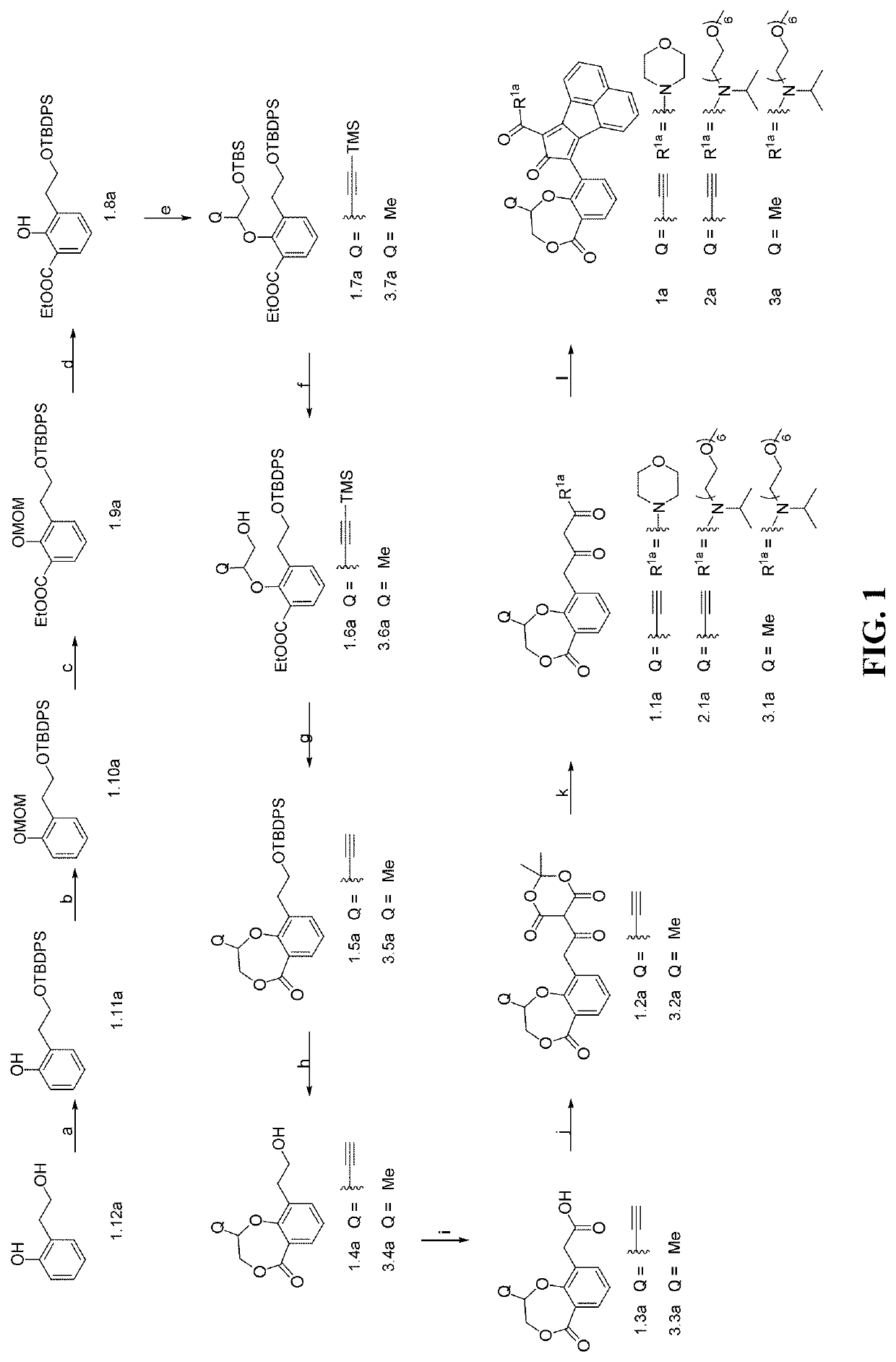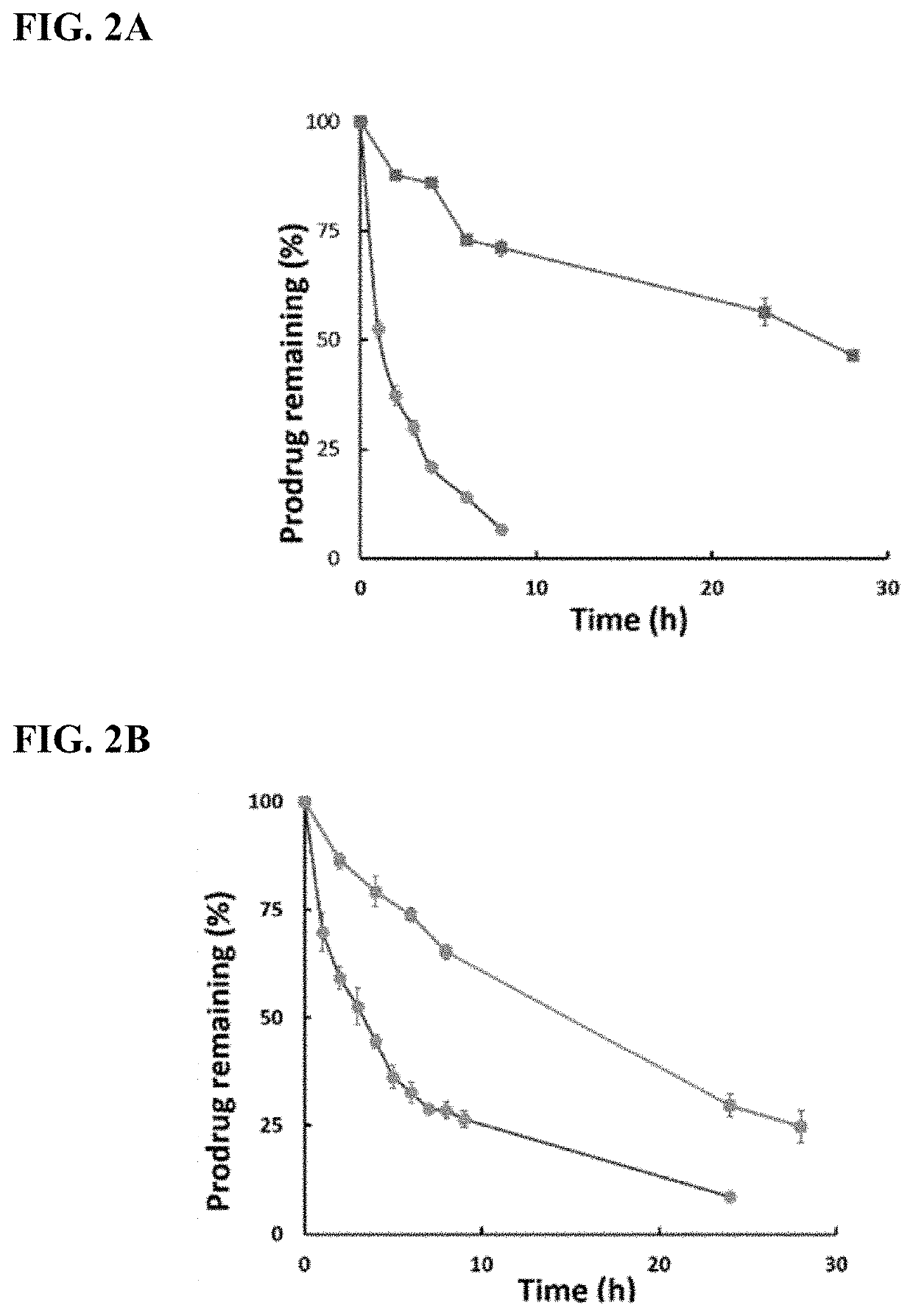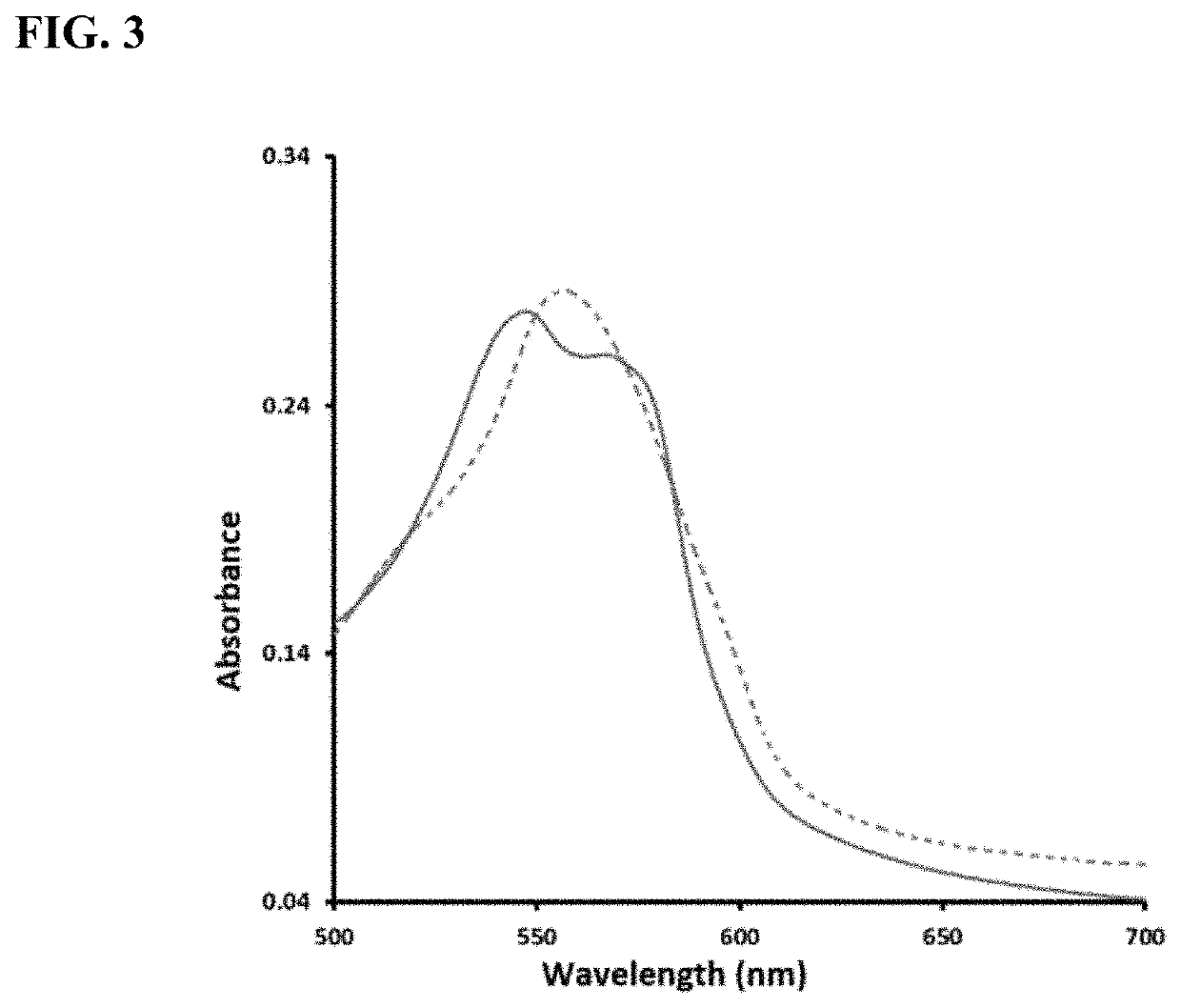Enzyme-triggered carbon monoxide releasing molecules
- Summary
- Abstract
- Description
- Claims
- Application Information
AI Technical Summary
Benefits of technology
Problems solved by technology
Method used
Image
Examples
example 1
Synthesis of Compound 1.11a
[0196]
[0197]Compound 1.12a (2.0 g, 14.5 mmol) and imidazole (1.5 g, 21.7 mmol) were dissolved in anhydrous dimethylformamide (DMF) (10 mL) under N2. Then, tert-butyldiphenylchlorosilane (TBDPSCl) (4.2 g, 15.2 mmol) was added dropwise at room temperature. The resulting mixture was stirred for another 1 h at room temperature. Then, the mixture was poured into water, and extracted with ethyl acetate (3×40 mL). The obtained organic layer was dried over anhydrous Na2SO4. After filtration and concentration, the residue was triturated with hexane, and the formed precipitate was filtered as the title compound 1.11a. Yield: 90%. 1H NMR (CDCl3): δ 8.16 (s, 1H), 7.66 (d, J=6.8 Hz, 4H), 7.51-7.39 (m, 6H), 7.24 (t, J=7.2 Hz, 1H), 7.05 (d, J=7.6 Hz, 2H), 6.90 (t, J=7.2 Hz, 1H), 3.92 (t, J=5.2 Hz, 2H), 2.98 (t, J=5.2 Hz, 2H), 1.13 (s, 9H). 13C NMR (CDCl3): δ 155.8, 135.6, 132.0, 130.9, 130.1, 128.4, 127.9, 126.9, 120.4, 117.1, 66.8, 35.1, 26.7, 18.9. HRMS (ESI) [M+Na]+ c...
example 2
Synthesis of Compound 1.10a
[0198]
[0199]To a solution of compound 1.11a (1.5 g, 4 mmol) in dry DMF (25 mL) at 0° C. was added NaH (191 mg, 4.8 mmol) portion wise. Then the resulting mixture was stirred at 0° C. for another 0.5 h, followed by the dropwise addition of methoxymethyl chloride (MOMCl) (480 mg, 6 mmol). The resulting mixture was stirred for another 4 h at room temperature. The reaction mixture was poured into ice-water, and extracted with ethyl acetate (3×40 mL). The obtained organic layer was washed with brine, and dried over anhydrous Na2SO4. After filtration and concentration, the obtained residue was purified on a silica gel column to afford compound 1.10a as a colorless oil (yield: 90%). 1H NMR (CDCl3): δ 7.76-7.61 (m, 4H), 7.54-7.37 (m, 6H), 7.28-7.20 (m, 2H), 7.17-7.06 (m, 1H), 6.99 (td, J=7.4, 1.1 Hz, 1H), 5.14 (s, 2H), 3.96 (t, J=7.2 Hz, 2H), 3.40 (s, 3H), 3.05 (t, J=7.2 Hz, 2H), 1.13 (s, 9H). 13C NMR (CDCl3): δ 155.4, 135.6, 134.0, 131.4, 129.5, 127.6, 127.5, 121...
example 3
Synthesis of Compound 1.9a
[0200]
[0201]To a solution of compound 1.10a (1.0 g, 2.4 mmol) in anhydrous tetrahydrofuran (THF) (30 mL) at 0° C. was added tetramethylethylenediamine (TMEDA) (417 mg, 3.6 mmol), followed by the dropwise addition of n-butyllithium (n-BuLi) (1.8 mL, 3.6 mmol, 2M in hexane) under N2. The resulting solution was stirred for another 1 h at room temperature. The obtained brownish solution was cooled to −78° C., followed by dropwise addition of ethyl chloroformate (520 mg, 4.8 mmol). A white precipitate was formed immediately. The resulting mixture was stirred with temperature slowly warming to room temperature (around 1 h). Then the reaction mixture was poured into saturated solution of NH4Cl, and extracted with ethyl acetate (3×40 mL). The combined organic layer was dried over anhydrous Na2SO4. After filtration and concentration, the obtained residue was purified on a silica gel column to afford compound 1.9a as a colorless oil (yield: 78%). 1HNMR (CDCl3): δ 7.7...
PUM
| Property | Measurement | Unit |
|---|---|---|
| Structure | aaaaa | aaaaa |
| Pharmaceutically acceptable | aaaaa | aaaaa |
Abstract
Description
Claims
Application Information
 Login to View More
Login to View More - R&D
- Intellectual Property
- Life Sciences
- Materials
- Tech Scout
- Unparalleled Data Quality
- Higher Quality Content
- 60% Fewer Hallucinations
Browse by: Latest US Patents, China's latest patents, Technical Efficacy Thesaurus, Application Domain, Technology Topic, Popular Technical Reports.
© 2025 PatSnap. All rights reserved.Legal|Privacy policy|Modern Slavery Act Transparency Statement|Sitemap|About US| Contact US: help@patsnap.com



